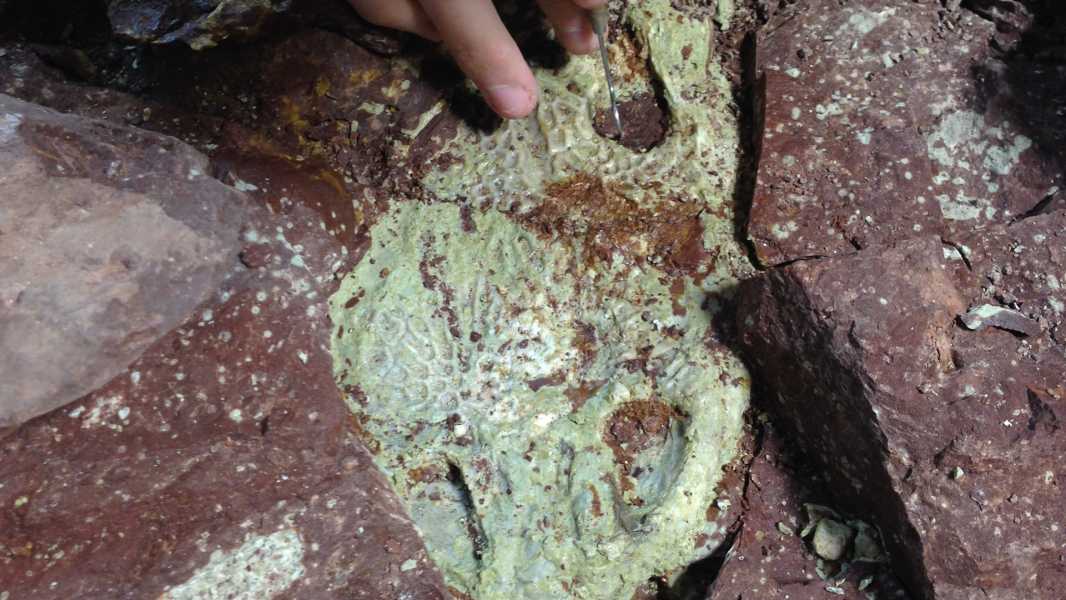
Scientists have discovered a 230-million-year-old Buettnererpeton bakeri skull in Wyoming. (Photo credit: Dave Lovelace, CC-BY 4.0)
About 230 million years ago, in an ancient floodplain in what is now Wyoming, at least 19 alligator-sized amphibians died simultaneously.
The fossils, found in four excavations between 2014 and 2019, were relatively intact and included small bones and parts of the creatures' general skeleton. The well-preserved specimens could provide clues about how these Triassic amphibians lived and evolved, the researchers reported in a new study published Wednesday (April 2) in the journal PLOS One.
Aaron Kuffner, a geologist at the University of Wisconsin-Madison and lead author of the study, and colleagues discovered the Buettnererpeton bakeri fossils in a Wyoming fossil bed known as Nobby Knob. The alligator-sized creatures belong to an ancient group of amphibians called metoposaurids, which are part of a family of large, primitive, quadrupedal amphibians. B. bakeri is the oldest known metoposaur in North America. The species lived during the Triassic Period (252 to 201 million years ago) and likely frequented freshwater lakes and rivers to breed.
Large collections of bones, known as bone beds, are common in the fossil record. These beds typically form when flowing water deposits bones in the same place over many years. Other times, bone beds form when a group of animals die at the same time in the same place — which is what appears to have happened at Nobby Knob.
“This group represents a snapshot of a single population, rather than an accumulation over time,” Kufner said in a statement. The discovery “more than doubles the number of known Buettnererpeton bakeri specimens.” In addition to the B. bakeri finds, the team also found fossilized plants, bivalves, and fossilized feces known as coprolites.
The amphibian bones showed no signs of movement by currents, suggesting that the creatures were in or near calm waters and slowly buried in shallow sediment during repeated floods. This preserved some of the fossils in the same form and arrangement as living animal skeletons. The researchers found B. bakeri fossils of varying sizes, which may help explain how the animals grew and aged.
Because the closely spaced bones were not carried by the current, the researchers suggest that the animals died at roughly the same time. They may have been part of a breeding colony, or they may have died because they were unable to escape the dwindling pool they needed to survive, the team suggests. It is currently unclear whether mass extinctions of metoposaurids like the one at Nobby Knob were common during the Triassic or whether this represents an isolated event.
Sourse: www.livescience.com





